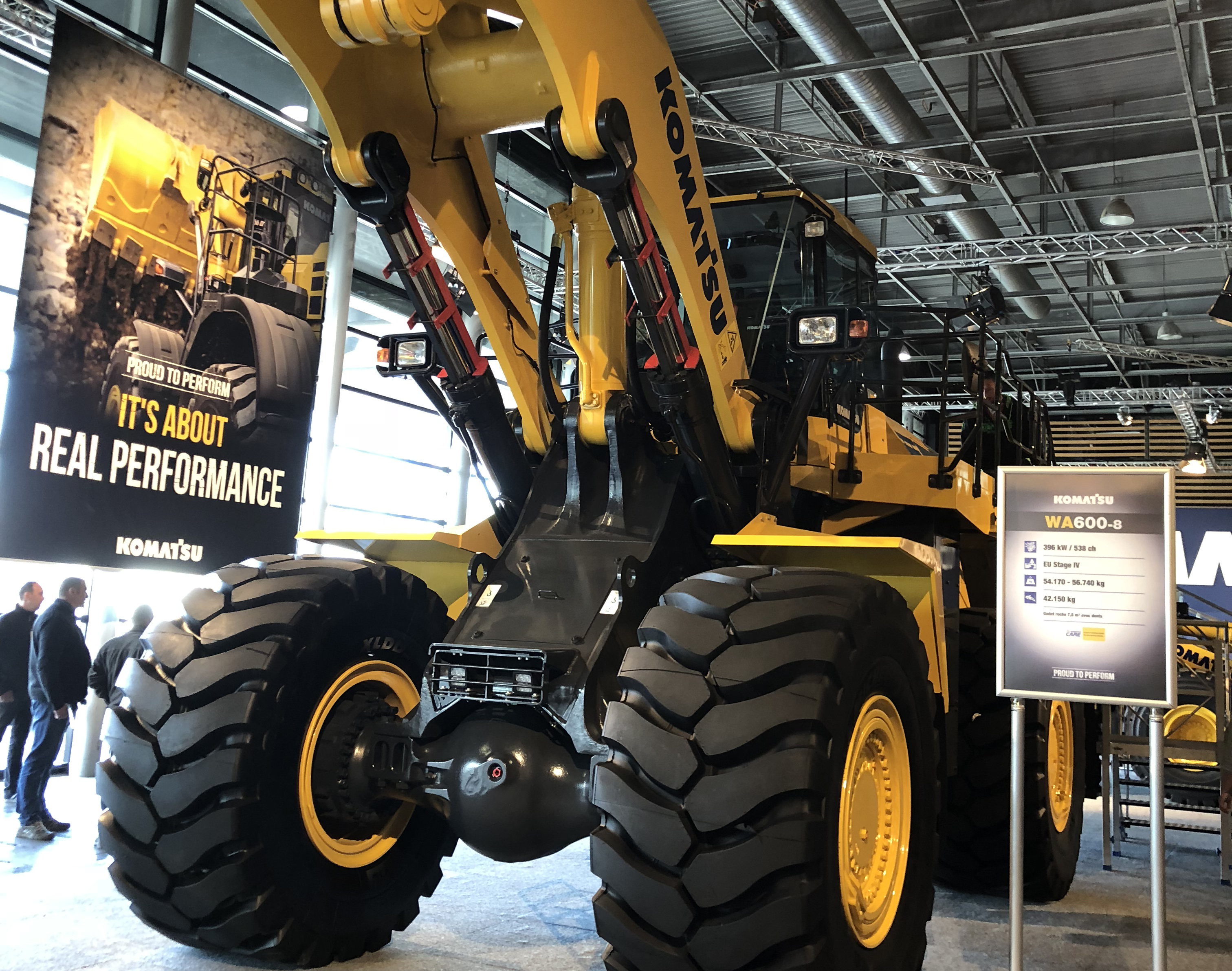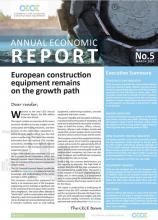
After a strong first quarter, growth slowed in Q2, before rising in Q3 and Q4, according to the
Current levels of sales are on par with the levels seen in 2006 and 2008, but the industry is still 20% below the 2007 peak.
The troubled markets in southern Europe and Central and Eastern Europe showed growth at above average levels. As a result, the north-south disparity is gradually becoming less pronounced.
“It came as a relief to see that the recovery of Italy and Spain continues and even gains momentum,” said Sebastian Popp, economic expert at CECE. “Even though southern Europe is still on a comparably low level, it is important to note that the gap between north and south is getting smaller.” In the large volume markets of northern and western Europe, the sector is close to historical record levels already.
All customer segments saw good business in 2017 and, especially, fleet renewals in the rental sector boosted demand. “The ongoing recovery of Europe’s construction industry, improved business in the mining and quarrying sectors, and a favourable economic environment with low interest rates further stimulated investments,” said Popp.
If none of these fundamentals changes significantly in 2018, demand should remain strong. The CECE Business Barometer reached new heights at the beginning of 2018.
Road sector
Sales of road equipment in Europe grew by 9% in 2017, and similar to earthmoving equipment, reached the highest market volume since the economic crisis. Road equipment is still the construction equipment sub-sector which has achieved the highest level of recovery in the post-financial crisis period.
In terms of individual countries within Europe, the largest road equipment market, Germany, recorded a small decline in sales of 3% in 2017, following record-high levels the previous year. France - ranked second in Europe – grew solidly at 17%, as did the UK, the third-largest market, at 11%.
The strong performance of the Nordic markets continued in 2017, with road equipment sales growing by 18%. Austria/Switzerland (+10%) and Benelux markets (+3%) also saw high demand.
The recovery in southern Europe gained some momentum in 2017, with sales growing by 19%. However, the north-south disparity in this sector is more significant than it is in the earthmoving sector. In Central and Eastern Europe, the market grew by 15%. However, at 32%, Russia’s road equipment market recorded the highest growth.
Light compaction equipment is the largest segment from a volume perspective, and saw sales growth at slightly below average levels, at only 8% in 2017. This included vibratory plate sales at single-digit levels, and a decline in sales for pedestrian rollers.
Performance in the heavy segment was stronger, with sales of self-propelled rollers expanding by 11%. Within this segment, single-drum rollers and trench rollers were the most dynamic products, while in contrast, sales of asphalt pavers were flat in 2017.
Outlook 2018
The February index value surpassed the previous record levels seen in the spring of 2017, with 75% of European manufacturers describing their business as good or very good. Another 21% considered business to be satisfactory. This is the most positive opinion ever recorded by the monthly CECE survey.
However, there were some differences between the product groups.
While around 70% of earthmoving and road equipment manufacturers anticipate further sales growth, only 40% of concrete equipment producers expect to see more growth. Furthermore, 20% of concrete equipment producers believe their business may decline during the next six months.
Component manufacturers were the most optimistic in the February survey, with almost 80% anticipating additional growth.
Factors that could result in a negative impact on the industry include the looming free trade crisis, as well as ongoing political and economic uncertainties, such as Brexit – the exit of the United Kingdom from the European Union.
However, machine delivery times could also become a significant limiting factor to growth in sales in 2018. As equipment demand has picked up around the world, with many regions seeing growth improve at the same time, manufacturers’ production capacities may prove insufficient to serve all markets at the same pace.
A lot of manufacturers have already reported some difficulties in obtaining components from their suppliers at the rate required. An additional factor in the very strong markets in western Europe is the restricted availability of machine operators, which poses a natural limit to equipment sales. This can result in the genuine level of machine demand exceeding what is possible in terms of operational machine supply.
Considering the range of factors which both support and limit equipment sales, a 5-10% increase in the European market is a realistic forecast for 2018. This would mark the fifth consecutive year of growth for the construction machinery industry.
But it may also be the final year before a downturn in the cycle in 2019.
The full report with detailed figures and graphs can be viewed and downloaded free from the CECE website: %$Linker:
*The Annual Economic Report from the Brussels-based CECE contains sections on the macro economic situation, the performance of the construction sector, the main markets and main segments of the European construction equipment industry. The report includes information from the national CECE member associations.
Digitisation: have your say
What is the state of digitisation in the construction sector and - more importantly - where will it be in three to five years or more? Have your say about these issues facing the construction sector.
It takes little more than 10 minutes to fill out a brief online questionnaire from the CECE. Results will form part of a larger survey which will be presented to delegates at the CECE Congress in Rome on October 19.
Data gathering for the report will be done in three phases, starting with the brief online questionnaire where respondents will remain anonymous, explained David Meinero, with Brussels-based Innovation & Development Consulting which is conducting the survey on behalf of the CECE. The CECE hopes to have between 100-150 respondents. At the end of the survey, respondents have the option to commit to an in-depth interview.
The CECE is looking to have around 40 companies that participate in an interview.
The third phase will be site visits where digitisation in action can be examined and documented. Up to 10 site visits are hoped for, said Meinero.
“The survey will provide a clear picture, a real snapshot of where the sector is and where it wants to go,” he said. The analysis will also allow an informed debate among all groups about where digitisation can benefit not the just the few but the construction sector’s many stakeholders, from original equipment manufacturers, component suppliers, contractors, rental companies and procurement organisations.
As highlighted in research by McKinsey and CECE in 2016, digitisation is recognised by machinery manufacturers as the main technology trend. Following the main recommendation of the McKinsey research, CECE is pushing for a global value-chain approach to put the construction industry at the forefront of these changes, said Riccardo Viaggi, CECE secretary general.
While digitisation is often seen as a great improver for on-site efficiencies, it also throws up many other issues for the supply or value chain, said Viaggi. He acknowledged that the agricultural sector is far ahead of construction in digitisation and there have been, and continue to be, much discussion and sharing of information between the two sectors to establish best practices.
The effects of digitisation are, and will be, much wider and will impact the business models of many companies in the near future, said Viaggi. The sharing of data will affect how companies cooperate as well as compete. Corporate culture will change and relationships with dealers and end-users of equipment will be much more data transactional based.
All this throws up questions around skills and training, not just of operators of machinery, but back-office personnel of dealers and OEMs. Will their staff have the necessary training to manage data and communications with dealers based on much more electronic information?
“How companies handle data and information that might be designated proprietary knowledge will be important,” said Robert Laux, vice-chair of the CECE high-level technical policy advisory group.
It is essential to understand who in a company will be responsible for overseeing such use of data, said Laux, who is also senior vice-president of operations and quality management with Bomag. “So the real question for us all is to know where we are going.”
Download the QR code reader and scan the QR code or browse the link: bit.ly/Digital_Construction







